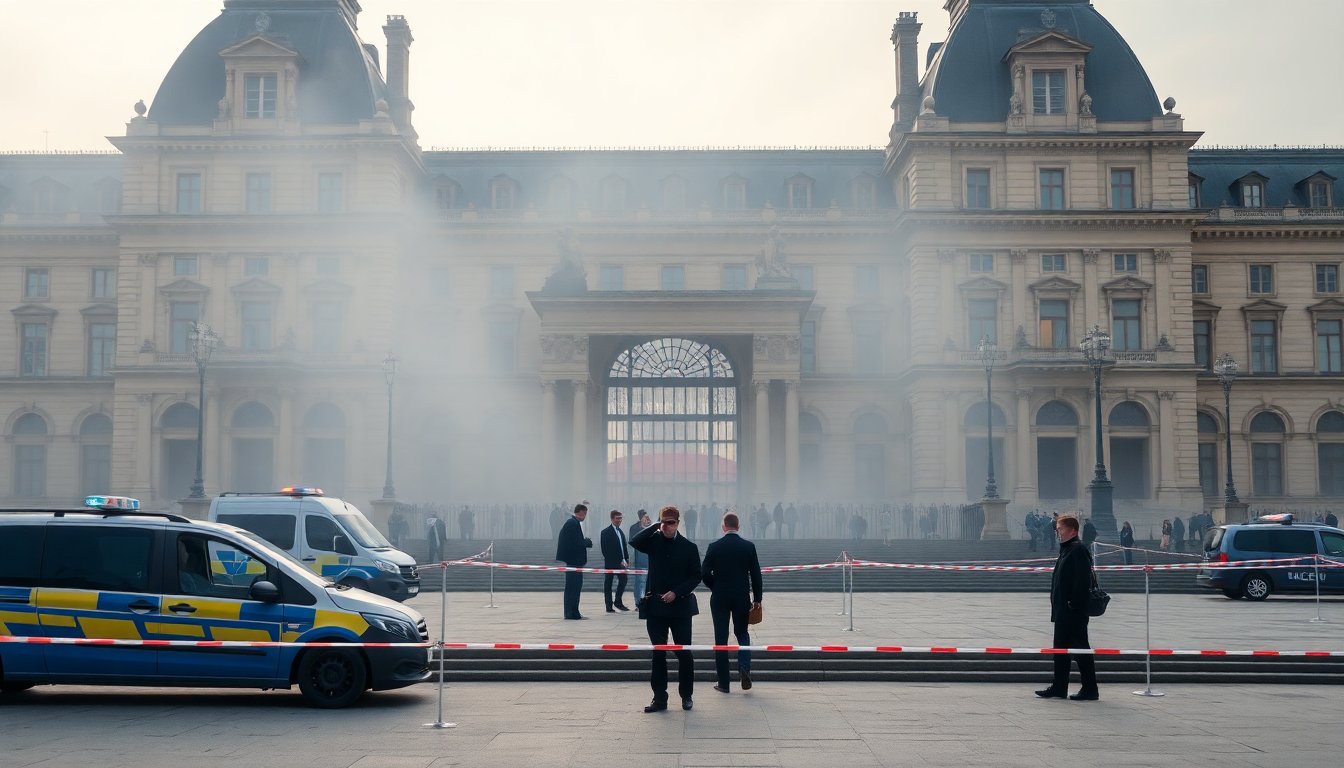Table of Contents
In a significant early morning incident on a Sunday, the world-renowned Louvre museum was targeted in a robbery. Thieves infiltrated the prestigious institution and stole remnants of the French crown jewels, confirmed by Paris prosecutor Laure Beccuau, valued at approximately 88 million euros, equivalent to about $143 million CAD.
The theft, characterized by some as the ‘heist of the century,’ has not only dominated global headlines but also ignited intense debate within France. The event has sparked discussions regarding national identity and the security protocols in cultural institutions.
The repercussions of the Louvre heist
The implications of the robbery extend well beyond the museum’s walls. Critics have expressed outrage, deeming the incident an affront to French heritage and a stark reflection of inadequate security measures. Some politicians have taken this opportunity to criticize the current government, arguing that the heist illustrates a broader issue of political instability within the country.
High-profile figures, including far-right MEP Marion Maréchal, have publicly condemned the incident, labeling France as a ‘laughingstock’ on the global stage. This sentiment resonates with many, particularly as the Louvre stands as a prominent symbol of French culture. Jordan Bardella, leader of the far-right National Rally party, echoed similar views, stating that the theft represents an ‘unbearable humiliation.’
A closer look at the security failures
Despite the Louvre being one of the world’s most well-funded museums, experts like Christopher Marinello, founder of Art Recovery International, have highlighted the ongoing issue of insufficient funding for security across cultural institutions. The Louvre’s vulnerability raises concerns for museums worldwide, indicating that even the most celebrated institutions are not immune to theft.
In a recent statement, Culture Minister Rachida Dati acknowledged the systemic neglect regarding museum security over the past four decades. After an emergency meeting with Interior Minister Laurent Nunez, Dati stressed the need for a comprehensive review of security measures at museums across the country. However, assurances about the effectiveness of the Louvre’s security system have been met with skepticism, especially regarding the reliability of security cameras during the incident.
Public response and political ramifications
The public reaction to the theft has been one of disbelief and anger. Many have expressed their concerns on social media, and protests have emerged, demanding accountability from museum leadership. Staff at the Louvre, already facing high visitor volumes and challenging working conditions, voiced their frustrations, leading to a demonstration against the museum’s management.
Calls for an overhaul of security measures have gained momentum, with discussions underway about potential upgrades to protect valuable artifacts in the future. Dati mentioned that a plan titled ‘Louvre New Renaissance’ is in development, aimed at expanding the museum’s capacity and enhancing security protocols.
The historical significance of the stolen items
The stolen crown jewels represent more than just monetary value; they hold deep historical significance for France. Beccuau referred to the loss as a ‘national disaster,’ emphasizing that these jewels symbolize the pride and legacy of the French state, dating back to the reign of Napoleon Bonaparte and his successors. The theft of such irreplaceable pieces resonates profoundly within the national consciousness.
Art recovery specialist Arthur Brand noted the cultural implications of this crime, stating that the stolen items represent a vital aspect of French heritage. Author Elaine Sciolino echoed this sentiment, asserting that the attack on the Louvre is akin to a ‘dagger into the heart of France,’ challenging the very essence of the nation’s identity.
The theft, characterized by some as the ‘heist of the century,’ has not only dominated global headlines but also ignited intense debate within France. The event has sparked discussions regarding national identity and the security protocols in cultural institutions.0


